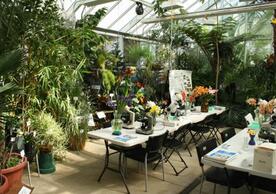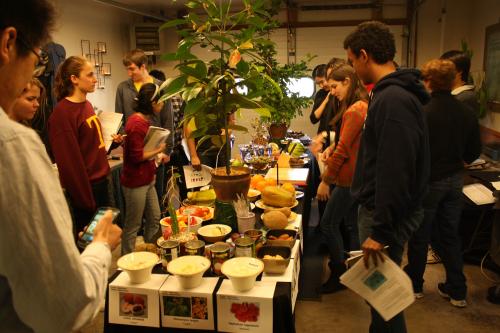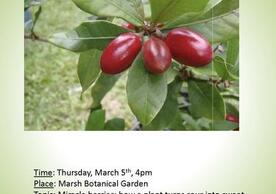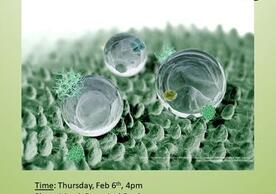We host several class labs here at Marsh Botanical Garden. This semester EEB 223, Evolution, Functional Traits and the Tree of Life, with Marta Wells is here today, Wednesday and Thursday (April 2, 3 and 4). The flowering plant lab is one of our favorites, with as many of the ‘higher’ orders of plants on display that we can grow in our glass houses. The lectures are given ‘down campus’ in larger rooms, but then they split up into manageable numbers (usually around 15 to 19 per session) and come up here for the lab sessions.
We line our event space with a raucous display of plants, set up tables and chairs, dissecting microscopes and other material necessary for the dissection of flower parts and other plant organs. Beyond that, we have tables of food laid out, with items that relate to the plant families that they are studying. On these tables, a wide array of mostly tropical fruit is displayed showing the diversity in fruit types and configurations. As the end of class nears, students (and a few lucky staff and volunteers) dive into the provender, with much commenting on the tastes and aromas. Ever eaten a durian?
We strongly believe in this segment of our mission support. It is one thing to hear the lecture about a subject, perhaps to see some slides. But then students come to the garden, breathe in the aroma of floral nectaries, handle the plants, perhaps dissecting flowers, etc. Then at the end of each lab, they partake of the wide selection of fruit, mostly tropical and many out of the ordinary. When you actually ingest a slice of fruit after identifying it and which part of the flower produced it, you are learning on what we call an ‘elementary level,’ if not alimentary.




